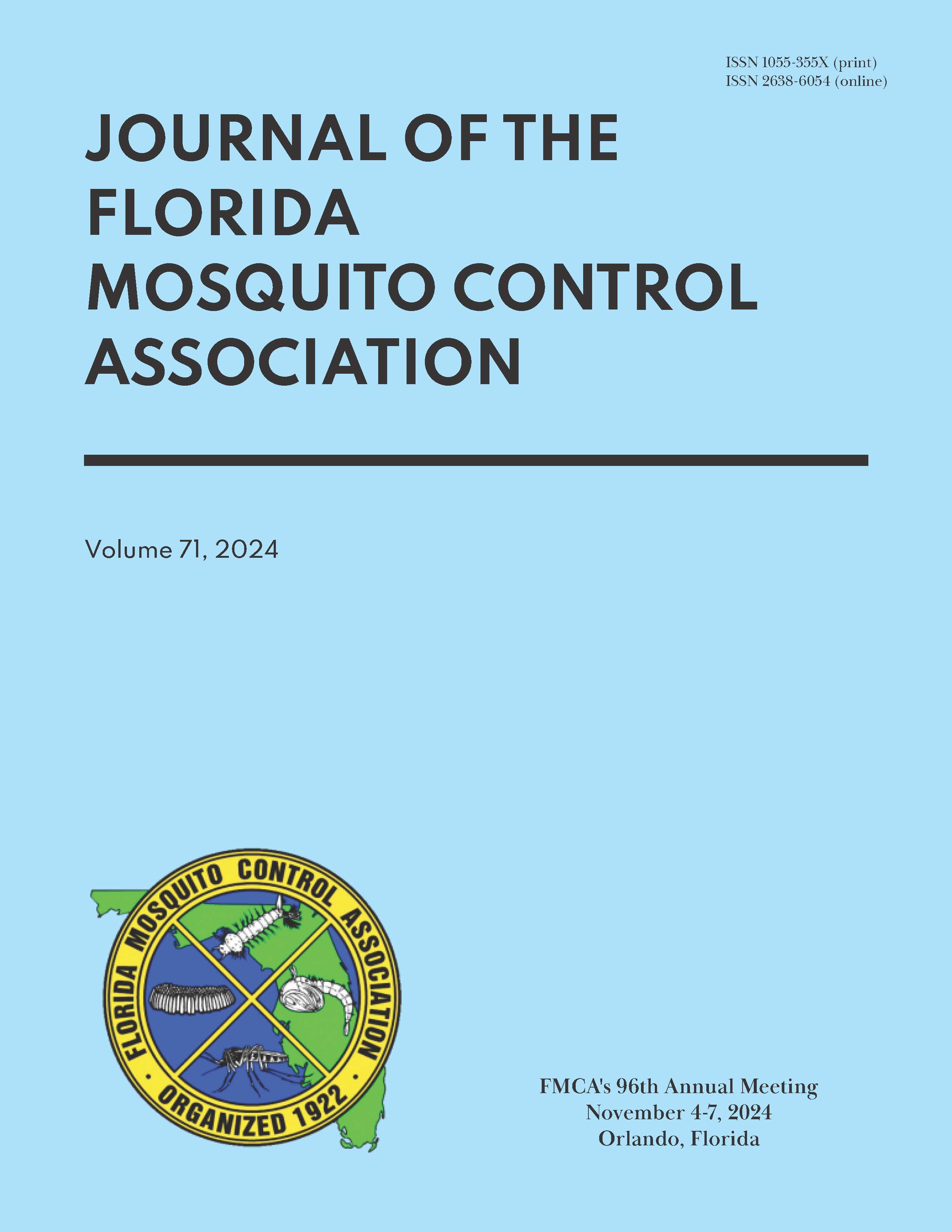CAPTURING TRENDS IN ARBOVIRAL SURVEILLANCE: COMPARING TRADITIONAL REVERSE TRANSCRIPTION PCR AND QUANTITATIVE REVERSE TRANSCRIPTION PCR ASSAYS
DOI:
https://doi.org/10.32473/jfmca.71.1.135298Keywords:
arboviral surveillance, flavivirus, public health, RT-PCR, RT-qPCR, t. Louis encephalitis virus, vector control, West Nile virusAbstract
West Nile virus (WNV) and St. Louis encephalitis virus (SLEV) pose a significant public health threat in the United States. These viruses are known to adapt rapidly to new amplifying hosts and geographic environments, making effective surveillance critical for public health efforts. This study evaluated the effectiveness of traditional reverse transcription polymerase chain reaction (RT-PCR) for surveillance purposes compared to quantitative RT-PCR (RT-qPCR) in detecting WNV and SLEV in mosquito pools. Mosquito pools were collected and screened for WNV and SLEV over a 10-year period. This study found an increase in the number of flavivirus-positive yet WNV-/SLEV-negative mosquito pools during 2018 compared to previous years. Quantitative RT-PCR detected more positive WNV and SLEV pools compared to traditional RT-PCR, eliminating false negatives and identifying false positives. The findings underscore the importance of using RT-qPCR for arboviral surveillance to accurately detect circulating viruses and enable timely public health interventions. Changes in local trends in mosquito-borne viruses and vector populations have the potential to impact
public health, emphasizing the need for proactive surveillance measures.
Downloads
Published
Issue
Section
License
Copyright (c) 2024 Steven T. Peper, Cynthia Reinoso Webb, Steven M. Presley

This work is licensed under a Creative Commons Attribution-NonCommercial 4.0 International License.

